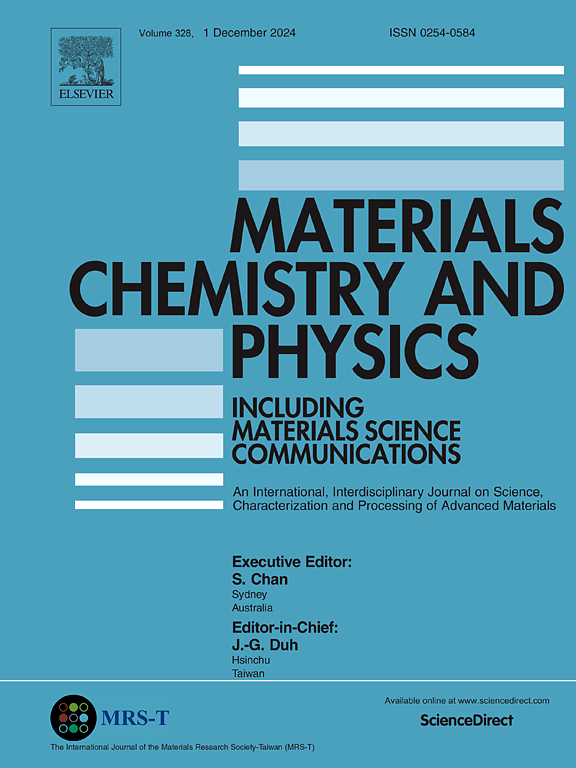Mechanical and biocorrosion properties of Ti-XZrC composites fabricated by spark plasma sintering
IF 4.3
3区 材料科学
Q2 MATERIALS SCIENCE, MULTIDISCIPLINARY
引用次数: 0
Abstract
The Ti-XZrC (X = 5, 10, 15 wt%) composites were fabricated by spark plasma sintering. The composites microstructure, mechanical, and biocorrosion properties were studied and compared with the CP Ti fabricated by the same condition. The results show that with the increasing amount of the ZrC in the matrix, the bulk composites relative is density reduced and the hardness and strength of the composites are significantly increased for fabricating the TiC intermetallics in microstructure. The Ti–5ZrC composite has significantly higher biocorrosion resistance than the CP Ti, and the polarization resistance of the composites is reduced by increasing the ZrC content from 5 to 15, because of the increasing porosities and diffusion rate of corrosive ions through the oxide layers. Generally, the Ti-XZrC composites show significantly excellent mechanical properties with increasing ZrC than the CP Ti, and the biocorrosion resistivity of the Ti–5ZrC composite as compared to the CP Ti is higher, suggesting that the Ti–5ZrC composite is favorable material for the biomedical application as compared with the CP Ti and the other composition of the Ti-XZrC composites. The Ti–5ZrC composite exhibited a hardness of 326 Hv and an ultimate tensile strength of 0.901 GPa, demonstrating significant improvements over commercially pure titanium. Additionally, this composite showed a polarization resistance of 720 kΩ cm2 and a low corrosion current density of 4.60 μA/cm2, indicating superior biocorrosion resistance.
火花等离子烧结法制造的 Ti-XZrC 复合材料的力学和生物腐蚀性能
采用火花等离子烧结法制造了 Ti-XZrC (X = 5、10、15 wt%)复合材料。研究了复合材料的微观结构、机械性能和生物腐蚀性能,并与相同条件下制造的 CP Ti 进行了比较。结果表明,随着基体中 ZrC 含量的增加,体积复合材料的相对密度降低,复合材料的硬度和强度显著增加,从而在微观结构中制造出 TiC 金属间化合物。Ti-5ZrC 复合材料的耐生物腐蚀性能明显高于 CP Ti,而当 ZrC 含量从 5 增加到 15 时,复合材料的耐极化性能会降低,这是因为孔隙率和腐蚀离子通过氧化层的扩散速度会增加。总体而言,随着 ZrC 含量的增加,Ti-XZrC 复合材料的力学性能明显优于 CP Ti,而且与 CP Ti 相比,Ti-5ZrC 复合材料的抗生物腐蚀性更高,这表明与 CP Ti 和其他成分的 Ti-XZrC 复合材料相比,Ti-5ZrC 复合材料是一种有利于生物医学应用的材料。Ti-5ZrC 复合材料的硬度为 326 Hv,极限拉伸强度为 0.901 GPa,与市售纯钛相比有显著提高。此外,这种复合材料的极化电阻为 720 kΩ cm2,腐蚀电流密度低至 4.60 μA/cm2,显示出卓越的耐生物腐蚀性。
本文章由计算机程序翻译,如有差异,请以英文原文为准。
求助全文
约1分钟内获得全文
求助全文
来源期刊

Materials Chemistry and Physics
工程技术-材料科学:综合
CiteScore
8.70
自引率
4.30%
发文量
1515
审稿时长
69 days
期刊介绍:
Materials Chemistry and Physics is devoted to short communications, full-length research papers and feature articles on interrelationships among structure, properties, processing and performance of materials. The Editors welcome manuscripts on thin films, surface and interface science, materials degradation and reliability, metallurgy, semiconductors and optoelectronic materials, fine ceramics, magnetics, superconductors, specialty polymers, nano-materials and composite materials.
 求助内容:
求助内容: 应助结果提醒方式:
应助结果提醒方式:


